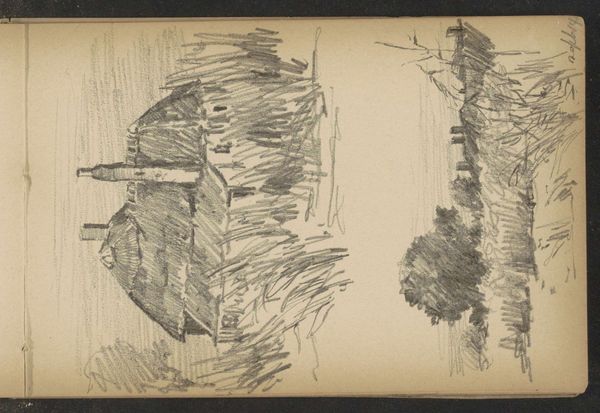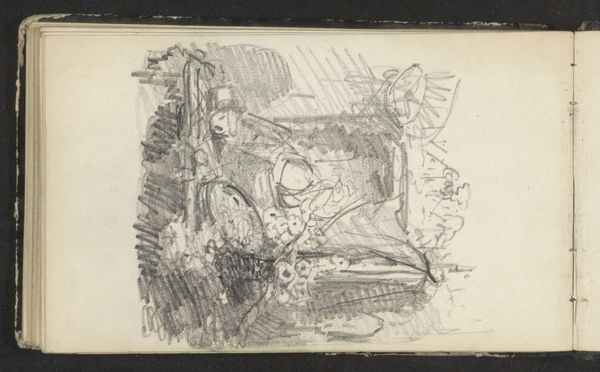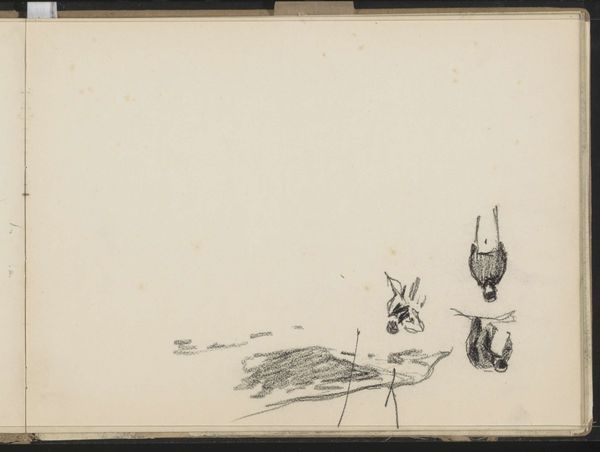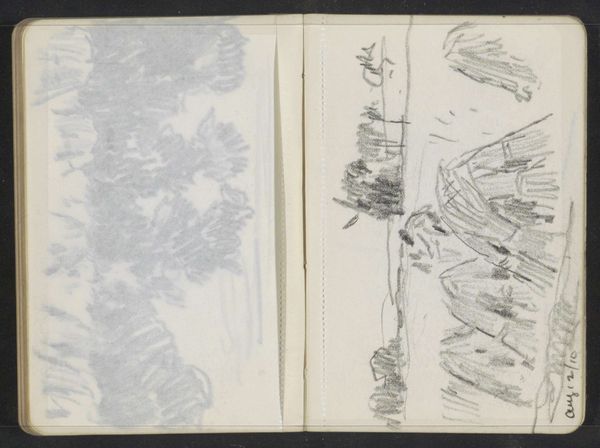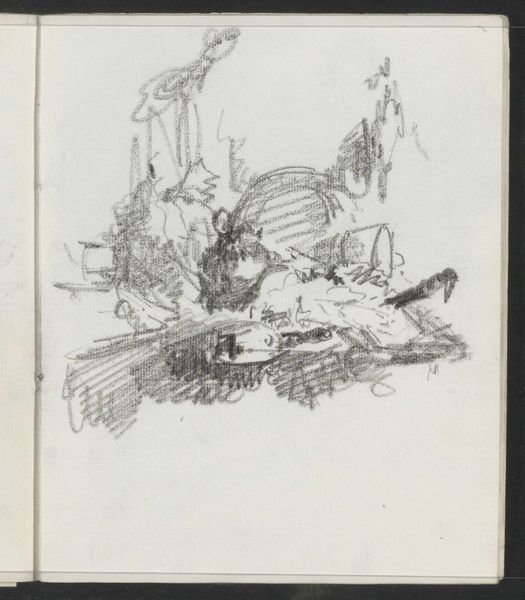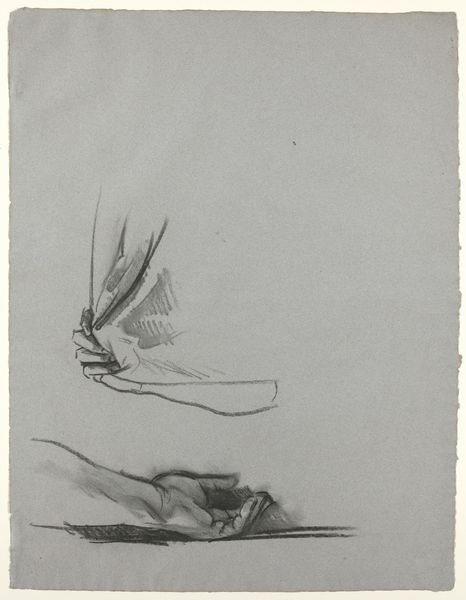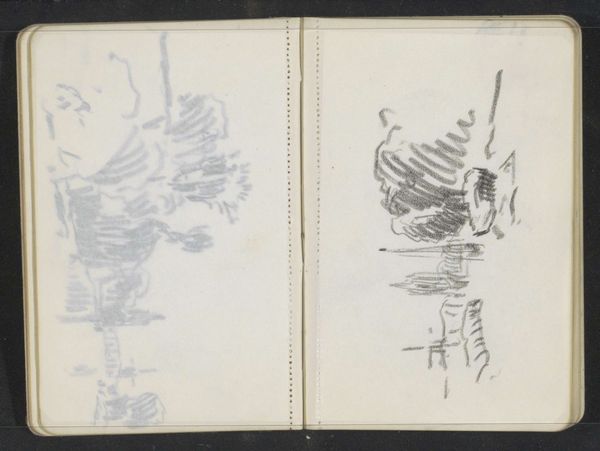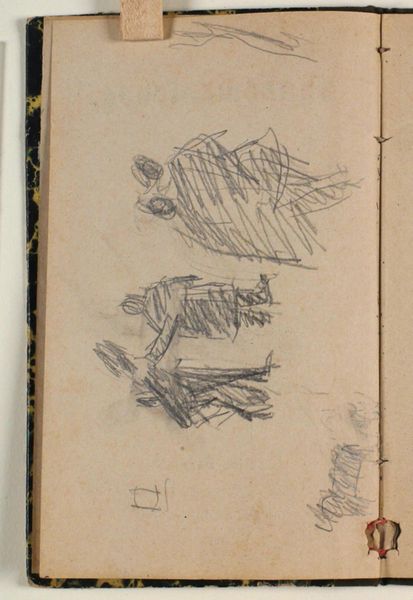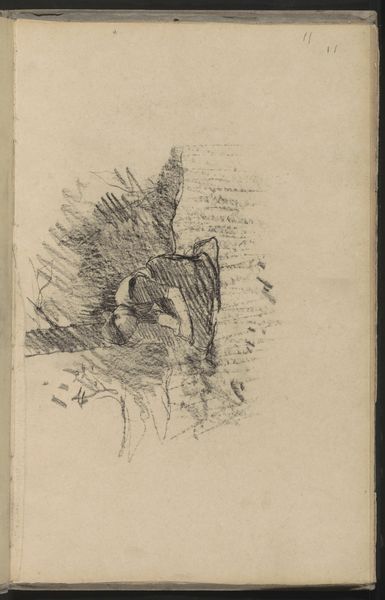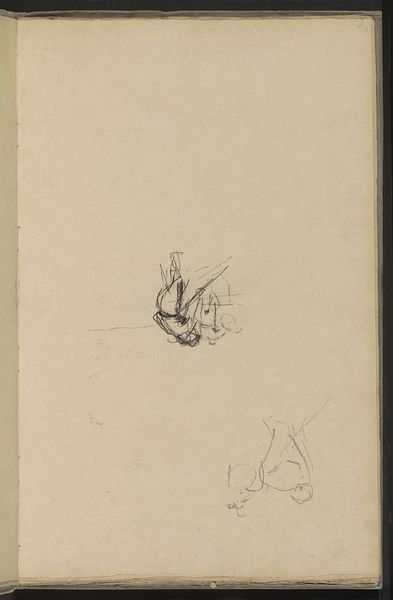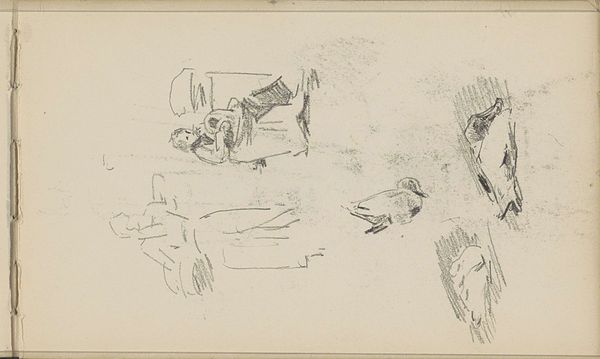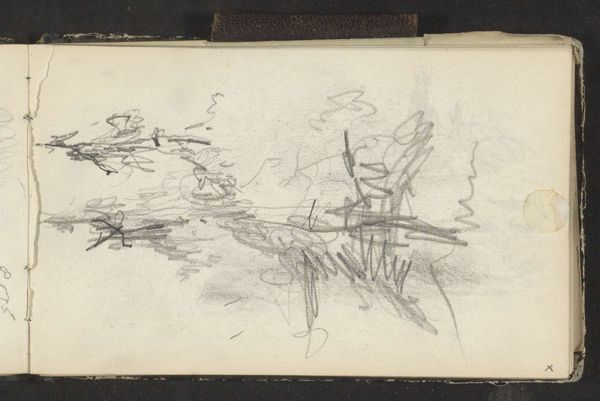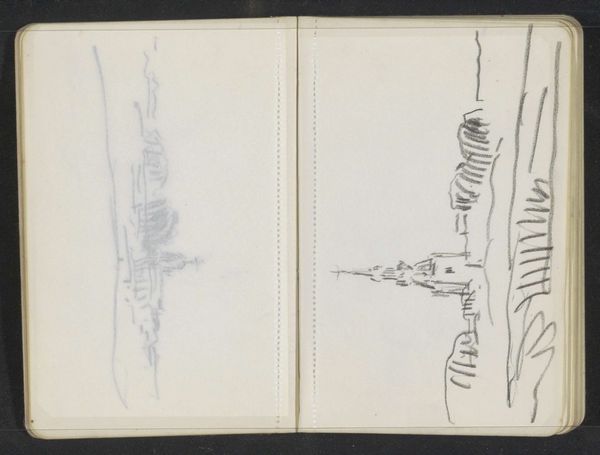
drawing, graphite
#
drawing
#
landscape
#
geometric
#
sketch
#
graphite
#
cityscape
#
building
Copyright: Rijks Museum: Open Domain
Editor: A disquieting mood. Despite the familiar urban forms, there's an unsettled quality here, almost like a dreamscape rendered in graphite. Curator: Indeed. What we're seeing is a work from Alexander Shilling, "Wasvrouw aan een kade, een liggend dier en een toren"—roughly translated, "Washerwoman on a Quay, a Reclining Animal and a Tower." Dating from around 1888-1889, it’s a drawing employing graphite on paper. Editor: I am struck by how the rough strokes suggest weight, volume, and how the artist uses layering to give the composition a compelling balance, even though the subjects depicted aren’t obviously linked. What are your observations regarding the way Shilling is approaching landscape in this sketchbook page? Curator: Note how the artist meticulously renders geometric shapes and their orientation, as we can observe from the shapes and textures present on the composition; the artist masterfully explores the limits of their medium, conjuring urban and organic textures with the limited tools at their disposal. Furthermore, you might find of interest how the labour present at the moment of the artwork’s production connects with that depicted on the riverside quay. Editor: You bring up such a vital connection between artist's toil and that of the washerwoman. Considering that connection between labor and material representation opens such interesting insights for a cityscape captured during this time period, when processes of urban change transformed cities with increasing rapidity. Shilling here encapsulates human presence embedded in everyday urban life. Curator: The rough, unblended graphite work lends this image a unique textural quality. This evokes a sense of authenticity and offers, in effect, an unmediated access to an artist's vision that provides interesting historical cues, if observed under the framework of contemporary production conditions. Editor: To me, the true appeal comes from these sketched textures evoking everydayness. What a powerful demonstration that less is often more in delivering meaningful artwork that encourages contemplation and understanding! Curator: Very well observed; I concur.
Comments
No comments
Be the first to comment and join the conversation on the ultimate creative platform.
